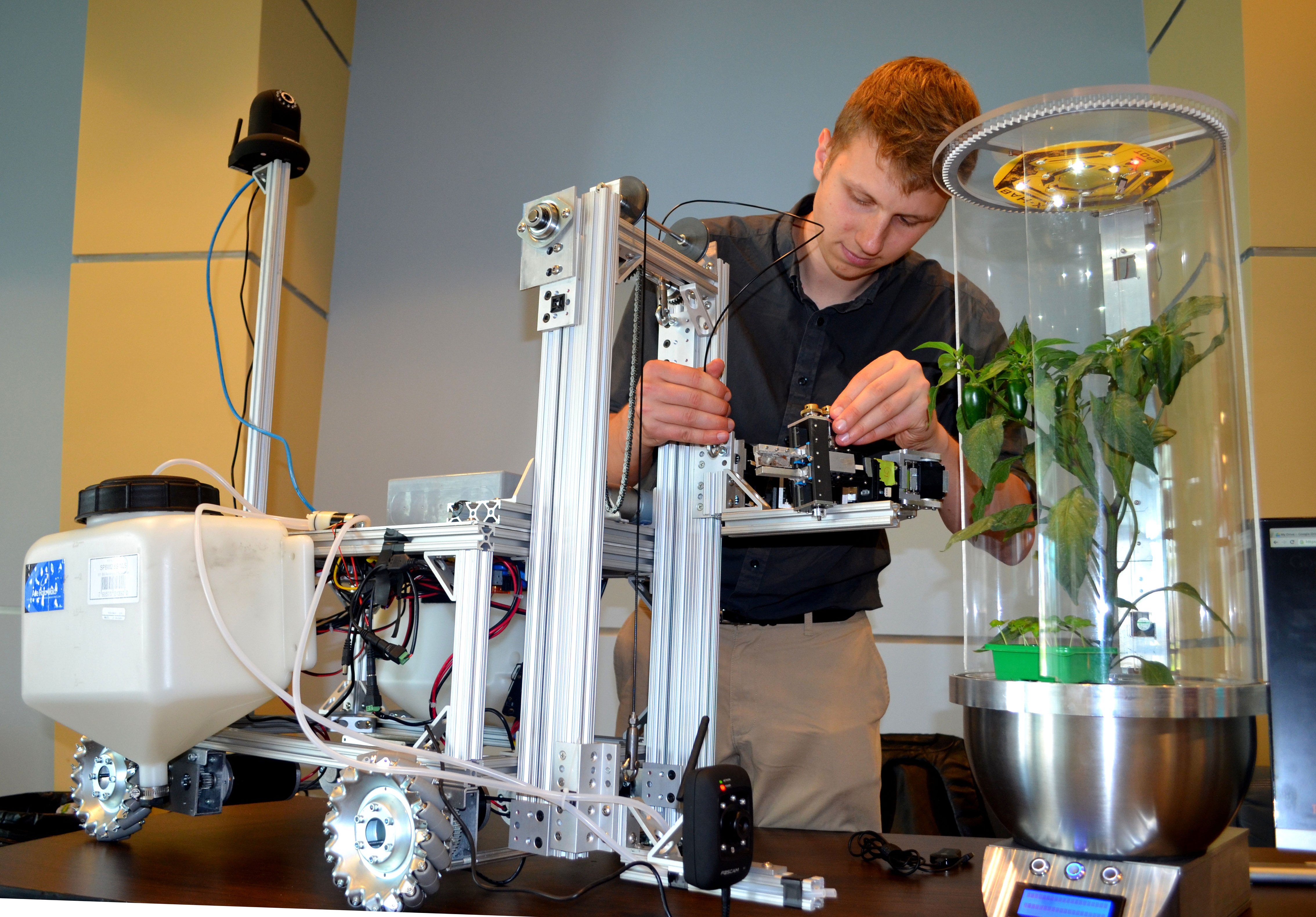To stay healthy, astronauts have to eat a balanced diet each day while exploring beyond the Earth’s atmosphere, and right now, NASA researchers are designing robots to tend gardens in deep-space habitats. Though it sounds like a concept straight out of Star Wars , a team of graduate students from the University of Colorado Boulder is developing the innovative technology to make it happen.
The students’ entry in the eXploration HABitat (X-Hab) Academic Innovation Challenge, a university-level project designed to engage and retain students in science, technology, engineering, and math is called “Plants Anywhere: Plants Growing in Free Habitat Spaces.” They’re currently developing a Distributed Remotely Operated Plant Production System, known as DROPPS, which is a concept for producing edible plants during long-term missions to destinations such as Mars. Instead of an area set aside to be used for just vegetation, the idea behind the project is that plants will be able to be distributed in any available area in a deep-space habitat.

University of Colorado Boulder graduate students Heather Hava, left, and Daniel Zukowski, second from the left, describe a computerized SmartPot, or SPOT. Image via NASA.
As for the robots, they’ll be doing much of the monotonous tasks so the astronauts can concentrate on more important responsibilities. For example, in the DROPPS system, a Remotely Operated Gardening Rover, or ROGR, travels around the habitat tending to a fleet of SmartPots, or SPOTS, which will be distributed throughout the living space. The SPOTS facilitate plants growing in a custom-designed hydroponic growth chamber with computerized systems to monitor the plants’ progress. Each is equipped with its own sensor run by an embedded computer, giving the SPOTS the ability to monitor their fruit’s or vegetable’s soil humidity and issue watering requests. The SPOTS are capable of measuring air, water temperature, lighting provided by LEDs, humidity, nutrient levels, and pH.

University of Colorado Boulder graduate student Dane Larsen checks out the forklift on a Remotely Operated Gardening Rover, or ROGR. Image via NASA.
If that’s not impressive enough, the ROGR robots can visit a specific plant to deliver water and can even locate and grasp a fruit or vegetable. If an astronaut wants tomatoes for a salad, the system decides which plants have the ripest tomatoes and assigns harvesting tasks to ROGR.
Throughout the academic year, the students researched and worked to meet a series of milestones to develop systems and concepts to be used in future deep-space habitats. Working in close cooperation with NASA, the team is determined to take another giant leap for both human- and robot-kind.
Story via NASA.

Advertisement
Learn more about Electronic Products Magazine





